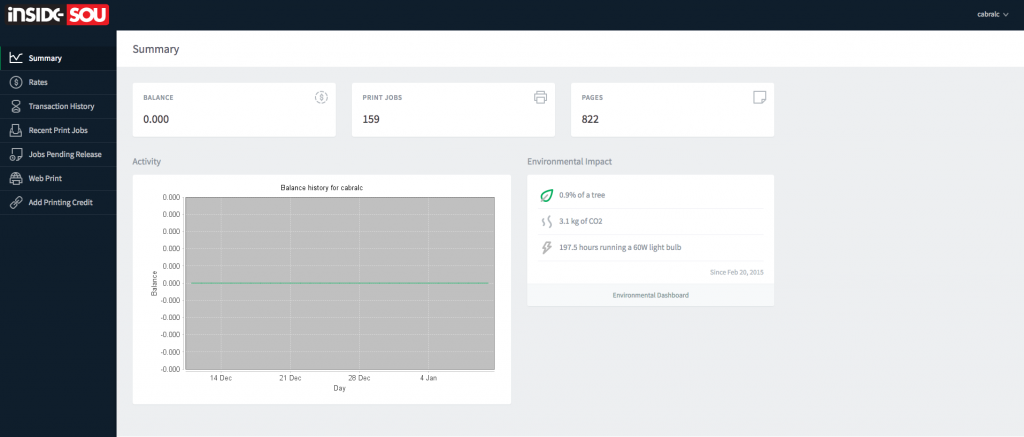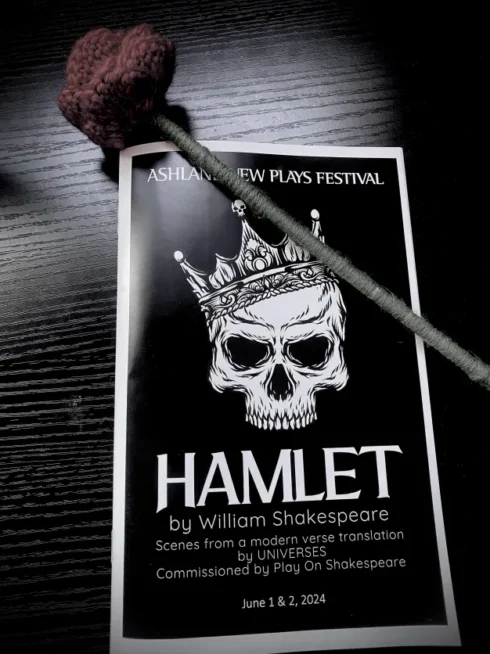
Last Monday, Southern Oregon University (SOU) instituted a new printing policy that requires students to “pre-pay” for printing. The policy change came as a response to the Business Services Department’s request for a change due to confusion and uncollectable debts.
Steve Larvick, the Director of Business Services, did not have a immediately accessible dollar amount for the “uncollectable debts” referenced in the school wide email from Brad Christ, but he said, “What we find is we were writing off three to 400 accounts of small dollar amounts.”
“The switch is to reduce the amount of activity posting on student accounts,” Larvick said. “To allow students to charge their account for what they think they’ll use.”
“The intent is to make it easier for the student,” he insisted. “They don’t have to spend time making small payments.” Larvick continued, “The secondary intent is that it saves admin time and effort not having to write off student accounts.”
These small payment, left unpaid, can cause issues for students in the future. Student worker, Lindsey Rocha, at the Enrollment Center verified that unpaid printing balances were an issue in her department. “Definitely that [unpaid balances] is a huge problem we see especially in June and July when students are gone but it can still take a month for printing charges from finals to go onto student accounts,” Rocha said. “It can also make it harder for students to get their diploma in the mail if they are unaware of these charges.”
She finished, “If it goes untouched then interest can start accruing. Sometimes students call us years later with account balances just from printing interest.”

Brad Christ, SOU’s chief information officer, sent the email which notified the university community of the change. Christ explained that when a charge is waived, that department takes on the fee itself. “Let’s say 45 pages were printed on a library printer,” Clarified Christ. “Those 45 pages, we know who printed it, and a charge is placed on their student account and a credit is given to the library in this case. If that debt is uncollectible and gets charged back we can follow that transaction, and so now we reverse the charges and the library has to eat those costs.”
State law dictates schools are only allowed cost recovery when it comes to student fees. “When it comes to printing fees, we can’t make a profit on it,” the Christ said. “In some circumstances the institution actually loses money on printing. Where there’s not a lot of student printing or not a lot of volume, there’s a lot of overhead on paper and toner maintenance, and repair and acquisition of the printer it’s not paying for the printer itself.”
He said, “[The university] charges these fees for printing because of cost recovery, but also because we don’t want to use tuition dollars to fund those things as well as it helps with our sustainability initiative. If people have to pay for it, it means that there’s considerably less waste.” Additionally, Christ said, “The fees that are paid are reinvested in student printing…we use those funds to expand and make better our printing environment for students.” This includes adding green print stations around campus and keeping printing cost affordable: “I haven’t raised them [printing costs] in the 7 years I’ve been here, and I don’t expect to.”
In his email, Christ included that the resource centers on campus provide students free printing. While the director of the Queer Resource Center (QRC) was unaware that this would be part of the Q&A, he was not necessarily upset by it. He said, “I see it as a benefit. I see it as visibility which is something we’re trying to do at every event and workshop and training. We’re trying to put visibility out there. My hope is that if a student feels comfortable enough to come into the space to print, hopefully they’re comfortable enough to engage in some sort of event.”
Through observational data- today alone the @SOUQRC received more than usual contacts asking about free printing in the resource centers.
— Thomas Arce, M.Ed. (@tarce0201) January 9, 2018
This week, Arce has seen an increase from last year and even last term on inquiries about printing in this first week. “We usually get people that come in saying ‘hey I wanna learn about the Queer Resource Center,’ or ‘I hear there’s a support group that’s here ‘ or something around queerness in that way,” he said. “But these students were asking about the printing.”
The resource centers are able to provide free printing because of the money generated by the student fees. “I want to continue to offer free printing. From a socio economic status, that is the bear minimum,” said Arce. “I want to offer that to students as much as they want. It brought new students in here visiting the space, and I like that because I think about not only are there queer students that utilize the space but allies utilize the space and allyship is very important to queer activism, so I encourage that.”
When asked about the new policy, students have been immediately skeptical. “This new system seems like a pretty big step backwards from the old one” said theatre student, Cameron Davis. Another student, Michael Jones, commented, “Most students might feel it infringes on their ease of access to printing. It’s another step to something usually regarded as very easy.”
Despite it being the first week of the term, some students have already needed to print and uploaded money to their PaperCut accounts, a program which can be found linked under Online Services banner on Inside SOU. Directions on how to upload printing credit were provided in Christ’s email.
Everything was super easy because of the instructions in the email sent out by Brad Christ. https://t.co/8MUU6HSLLe
— Preston Price (@theophagy22) January 9, 2018
Preston Price described his experience uploading money and printing on twitter: “Everything was super easy because of the instructions in the email sent out by Brad Christ.”
Other Oregon schools have similar policies in which students must pay before they can print; however, in the cases of University of Portland, Portland State University, and Western Oregon University allot students a certain amount of printing credits or dollar amount they can reach until they must pay for printing.



